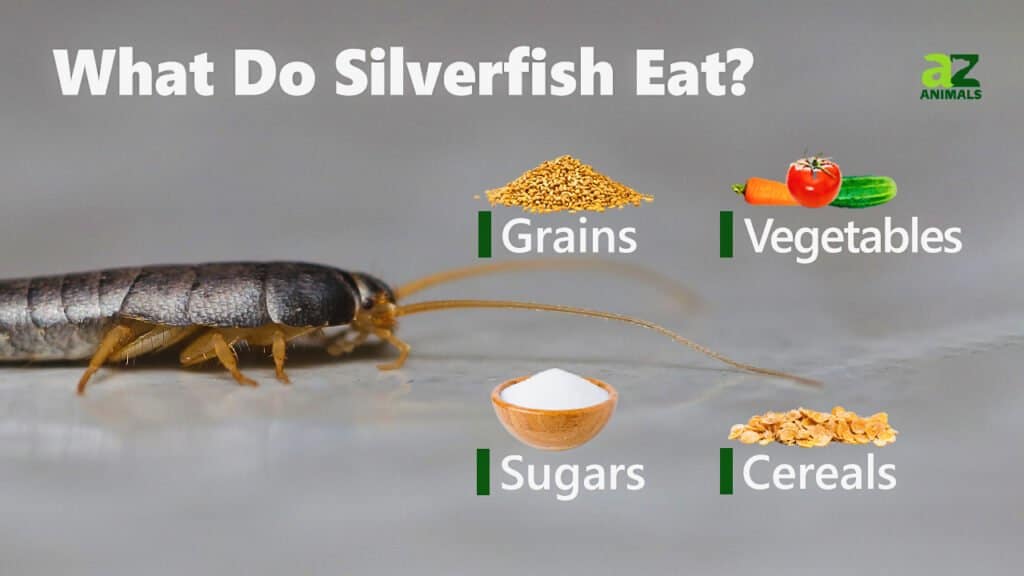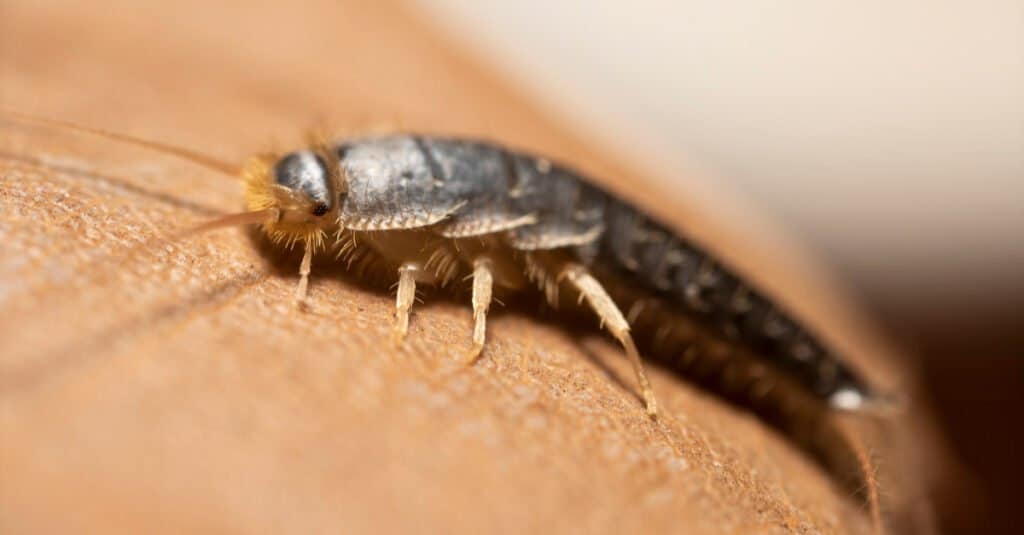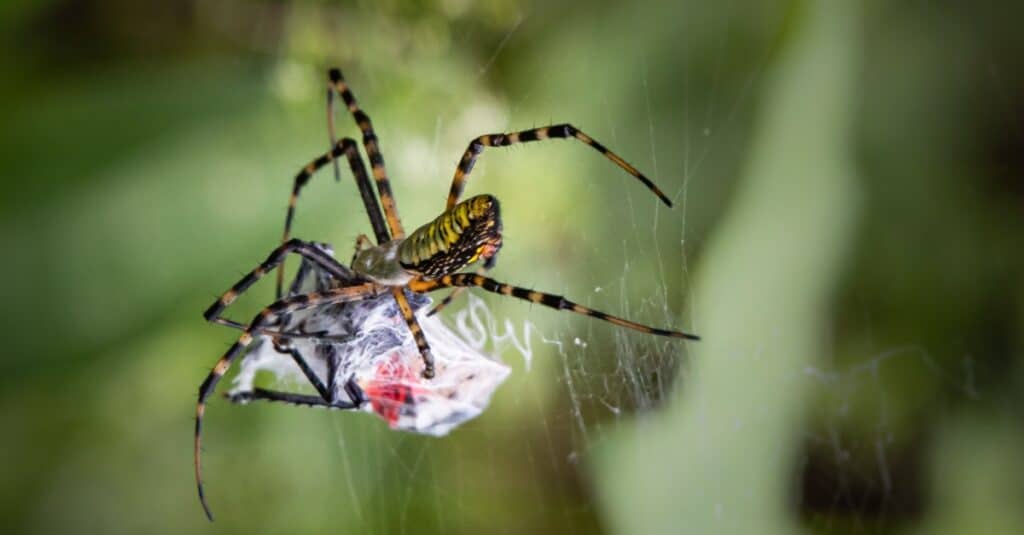Silverfish are small insects that derive their name from the color of their carapace and the way their locomotion mimics that of a fish swimming. They are land-dwelling creatures that are found living on most continents, but they tend to live in places that are high in humidity. That desire to be in humid places with a variety of foods brings them into contact with humans quite often. Why do they like to be so close to humans and what do silverfish eat?
We will show you answers to both these questions while showing you how they find their food and whether they pose any threats to people.
What Foods Do Silverfish Eat?

Silverfish eat paper, adhesives, sugar, and dead insects. These omnivores consume products that are rich in starches and dextrin for their cellulose, a polysaccharide that silverfish can digest with ease. As one might imagine, sources of this food are quite abundant throughout the world.
These are the most common polysaccharide-laden foods that silverfish will consume:
- Paper
- Wallpaper
- Bookbinding
- Dead insects
- Shampoos
- Carpet
- Hair
- Glue
- Cotton
- Silk
- Grains
- Vegetables
- Sugar
- Flour
- Pet foods
- Coffee
- Lace
Silverfish will eat a host of different foods because they contain the right types of polysaccharides. That explains why they are best described as scavengers that will happen across foods.
In some cases, they eat detritus from humans, like hair or even dandruff. The silverfish’s unique diet allows them to eat a variety of different foods, and it’s not stuff that most other animals are going to compete against them to eat.
How Do Silverfish Find Their Food?

Silverfish use their sense of smell to lead them to foods.
©Panto.unno/Shutterstock.com
Silverfish are attracted to unusual foods as they pursue the sugars and proteins in them. How do these insects find food at all, though? They’re not very large, have no distinct eyes, and it’s not believed that they have any sense of hearing that humans would recognize.
One thing that people do know about silverfish is that they can use their senses to detect when it is light and dark, and they prefer the latter. They will hunt around in moist areas using their antennae to feel around their environment.
Silverfish do have a sense of smell, and they actively avoid places that have some scents like cinnamon or lavender. However, when they find something that has the rich smells of starches, they will go to the area and seek out food.
Basically, their sense of smell leads silverfish to their preferred foods, and they operate under the cover of darkness to get their meals. A benefit of the silverfish’s biology is their ability to go upwards of three hundred days without eating food as long as they have access to water. They can survive and search for food for a long time.
What Do Baby Silverfish Eat?
The silverfish is a problematic insect because they breed so quickly, and their young do not spend a lot of time as juveniles. The females lay about a dozen eggs that hatch in about 6-10 days. Once these insects hatch, they are ready to assume a fully adult diet.
They do not have a period where they eat anything different than their parents. Baby silverfish will eat paper, various adhesives, and different fabrics along with the detritus from humans and other insects.
They reach full adulthood in a time between three months and two years, and then they’re ready to breed and multiply again.
Silverfish are long-lived and they can live in small crevices, making their infestations very troubling.
Are Silverfish Dangerous to Humans?

Silverfish will eat food, paper, and home furnishings.
©2Dvisualize/Shutterstock.com
Silverfish are known for being a pest to human beings because they eat clothes, food, paper, and home furnishings. They can ruin pictures and valuable documents by infesting storage areas. Although losing one’s precious memories to these bugs can be annoying, they do not pose a threat to human beings.
Their antennae might look like long pincers, but the only way silverfish can harm humans is by biting them, and few, if any, confirmed cases of silverfish bites exist. Even if a person is bitten by a silverfish, they are not known for carrying any sort of disease that could transmit to human beings, like a tick.
People often worry that silverfish could be dangerous to their pets, too. The truth is that aside from being a nuisance, these insects do not hurt most pets, either. The only downside would be if the pet ate a silverfish that had been poisoned by pest control methods, but that is such a rare occasion since silverfish have a propensity to avoid highly trafficked areas in a home.
All in all, silverfish pose no danger to human beings despite looking like a harmful bug.
What Predators Eat Silverfish?

Spiders can capture and eat silverfish inside and outside.
©cwieders/Shutterstock.com
Silverfish are small insects that can hide in crevices and prefer to be most active at night. Moreover, these insects can scurry very quickly. Aside from that, though, they do not have much in the way of defenses against predators. With their stunning level of sensory deprivation in terms of sight and hearing, they are quite open to predation by some creatures.
Take a look at some of the predators that eat silverfish:
The lack of predators that consume silverfish is almost startling given their lack of defenses and senses. Yet, they live in dark indoor locations, places that are not known for having a lot of predators lurking. Also, they are much faster than many of their would-be predators, like most spiders.
Silverfish are creatures thought to be 300 million years old, and they have barely changed in that time. They’re great survivors, capable of going a long time without eating, and they have learned how to successfully hide away from enemies.
When the time comes for them to eat, though, they love to consume paper, glue, and fabrics that are filled with polysaccharides for them to break down, especially cellulose. Although they are not dangerous to people or pets, silverfish are a great reminder that longevity doesn’t always require a creature to be an apex predator.
The photo featured at the top of this post is © Panto.unno/Shutterstock.com
Thank you for reading! Have some feedback for us? Contact the AZ Animals editorial team.






